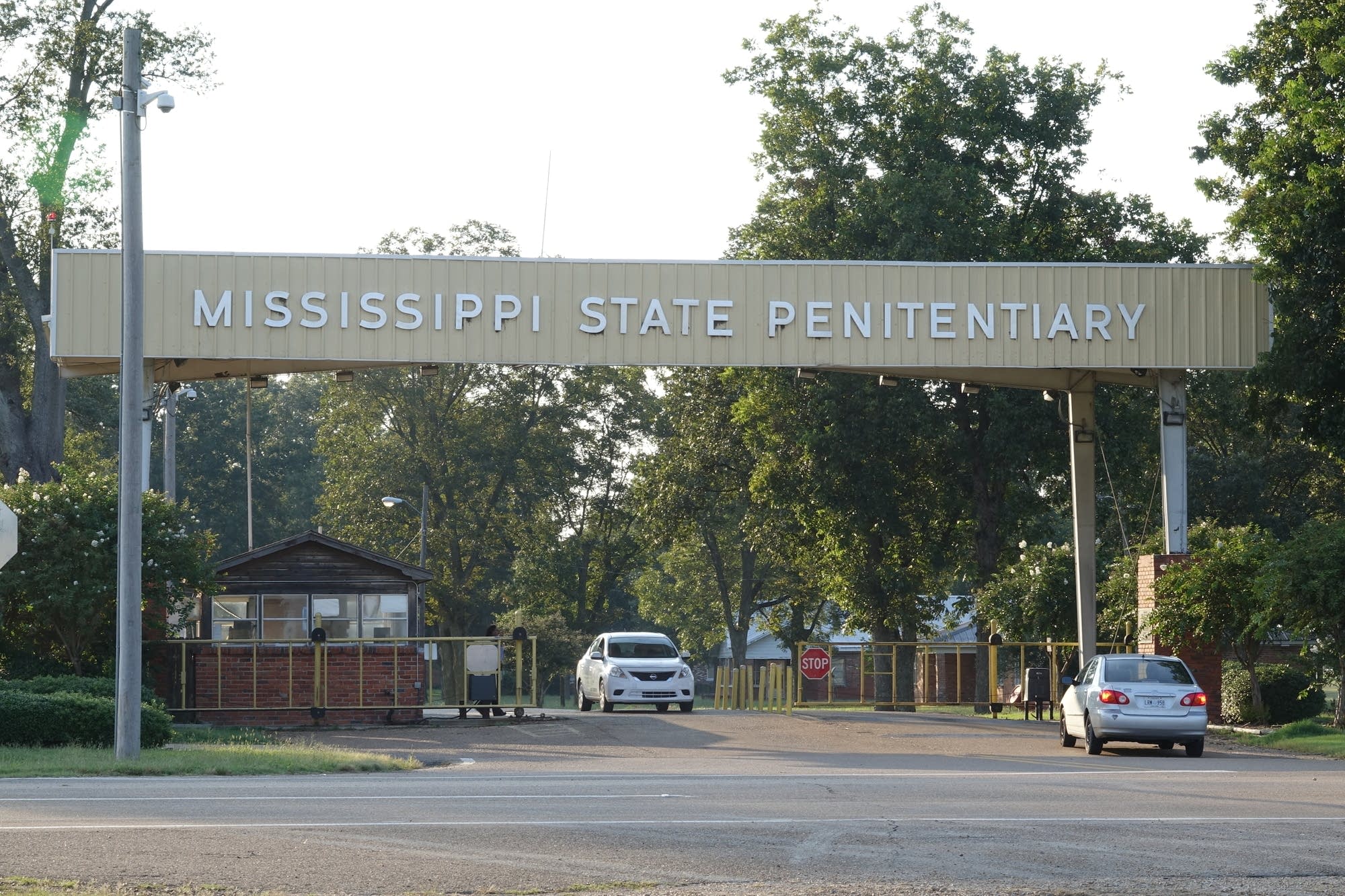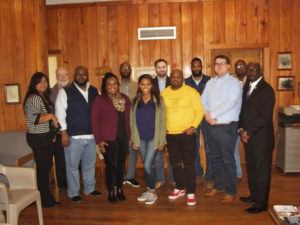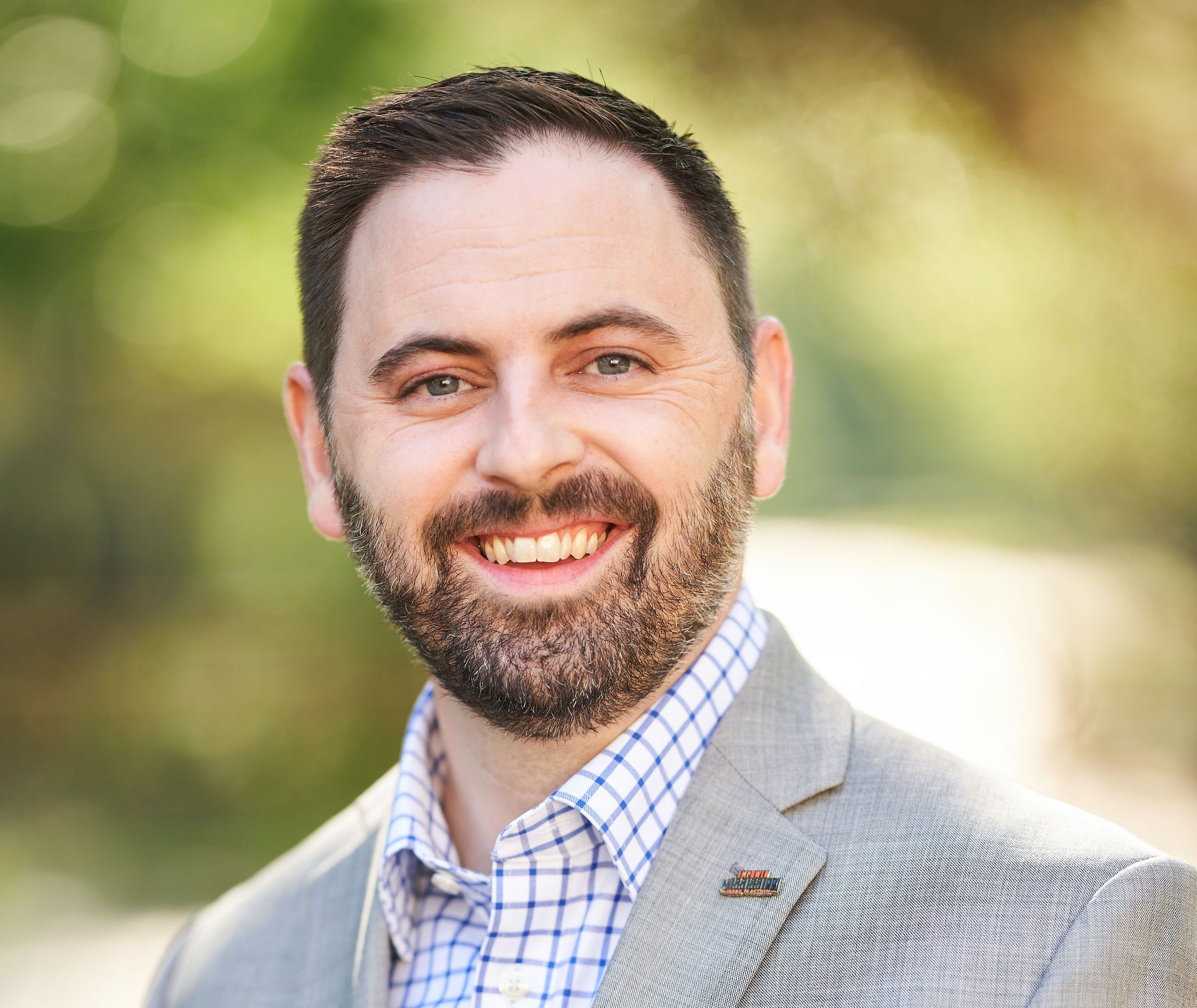My Day Behind Bars


Broken is a series that highlights broken pieces of our criminal justice system, how they impact people, and how we can fix it.
I returned from prison last week.
No, it wasn’t an extended stay, but it was a tour that lasted long enough to leave me with questions, concerns, and an aching heart. I joined members of the Empower Mississippi team, Miss Mississippi Asya Branch, Representative Abe Hudson, and other concerned citizens for a tour of Parchman, Mississippi’s well-known prison.
At Empower Mississippi, we launched an initiative this year to remove barriers that make it harder for people to find work. Many of those barriers exist in our criminal justice system. Mississippi has the third-highest incarceration rate in the country. We imprison more of our people than almost anywhere else in the world, and too many of them are released and re-arrested in a cycle of incarceration. We’re working to change these laws that act as barriers to work for the people of our state, especially those who end up in the criminal justice system.
Like many, I thought that long, harsh sentences would keep people from wanting to commit crimes, and in turn would keep them from returning to prison. The more I’ve learned, the more I believe that approach is not very effective, is extremely expensive, and is a flawed way to view people and our criminal justice system. We are all broken. We are all flawed. Certainly, people make choices, and when you make the choice to break the law there are consequences, but the purpose of our system ought to be keeping communities safe, helping people, and doing that in a way that is as minimally invasive in people’s lives as possible.
The system should be about taking people who are dangerous off the streets, but often we end up locking up far more people than those who are truly dangerous.
Last Wednesday our group made its way across the flat plains of the Mississippi Delta on a rainy, gray day to tour the 18,000-acre, all male inmate prison. Entering the facility, we stopped at the security checkpoint where the car was searched. They looked under the car and in the trunk. They had previously done some level of background check on each of us before we got there.
I knew it was going to be a heavy, sobering day, but I didn’t quite know what to expect. We went in with the goal of seeing the reality of life behind bars. This prison has been a tragic place in Mississippi’s story, and I wanted to see firsthand what it was like.
Not knowing exactly what I was expecting, we made our way into the facility. We were greeted by guards and escorted into a room at the front gate where we were asked to leave wallets, keys, and anything that could be used as a weapon.
They showed us some of the contraband that had been confiscated from the inmates. One item that stood out was a particularly large machete that had been seized.
We anxiously awaited directions before beginning the tour. I think we were all curious, but also feeling the weight of what we were about to witness.
The group then loaded into a van and headed onto the grounds.
In my mind I was thinking Parchman was one facility, but that’s not the case. It is many buildings spread out over thousands of acres in the Mississippi Delta.
As we made our way into the facility, we were introduced to a new term by the guards, “free world” referring to life outside the Parchman walls. That was a term they used throughout the day. Many times, they compared life inside the prison to life in the “free world”.

The group touring Parchman included lawmakers, Empower Mississippi representatives, Miss Mississippi, and concerned citizens.
Vocational Training Programs
The first stop on the tour was the vocational training center where a small number of inmates learn a trade before being released.
Everything at Parchman is based on security level. Upon arrival each inmate is assigned by a case worker to maximum, medium, or minimum security. The case worker looks at the crime committed and the behavior of the inmate to determine the security level. You are working your way toward minimum security which is a much better lifestyle than maximum security. You are not eligible to apply for these vocational programs unless you meet the rigorous standards of the minimum-security level.
In the vocational center there were areas where inmates could learn trades such as welding, carpentry, sewing and automotive repair before their release. We walked through the area where inmates were sewing, and I immediately noticed the great pride taken by one inmate in his work.
He was sewing the waistband onto the prison pants he was making. We had a brief conversation about the work he was doing, and he showed me where he cut the elastic, where he sewed it, and where he stamped the size on the pants. Even in prison there is dignity in work. There was a clear contrast in those who were working and busy with their hands doing something productive and those who were either lying around or in an isolated cell.
While the inmates were working diligently, I couldn’t help but wonder how many of the skills they were learning behind bars would match the jobs that are available in the “free world”. The number of inmates allowed in the program was also concerning to our group, who discussed the value of expanding these programs.
The program is very small compared with the total population of 3,600. There are only about 150 people in the vocational programs. Clearly that’s a very tiny percentage.
The Execution Chamber
Next, we were led from the vocational area where inmates had the opportunity to be productive to the execution chamber – a dramatic difference in atmosphere.
We were escorted into the lethal injection room and we saw where inmates are strapped onto the table and the microphone lowered for their last words. We walked the dark, sterile halls of the execution chamber with heavy hearts and our group was nearly silent.
Physically being in that place was tough. It’s easy for a white guy from South Mississippi who has never been a victim of a serious crime and doesn’t have any family members incarcerated to not think about executions very much. But to walk through and physically touch, and see, and smell these places – it didn’t feel like we were in America. It felt very detached and dark.
Death Row
After leaving the execution chamber, our group was then escorted to death row. There was very little discussion as we traveled in silence to the unit.
I think we were all taking it in. We walked into death row, and I was surprised at how little instruction was given. It would have been very easy to reach in and shake hands or touch one of the inmates.
We were escorted by a guard carrying a large shield. When we asked about the shield we were told that sometimes prisoners will throw feces or spit at you, and the shield is used for protection.
We walked into an open central area where people in our group were able to see two floors of single cells. Maybe they had a tiny window to the outside in those cells, but I’m not sure. The cells were very dark. Some of the inmates were on their beds and some were leaning up on their bars looking out at us.
As we walked through, Rep. Hudson stopped to speak to one of the prisoners and asked his name and where he was from. This inmate was friendly as he explained his tattoos.
The thing I couldn’t shake from the day was the feeling that we were walking through a zoo observing creatures in their setting. Only, these are not creatures, they are human beings, and I’m used to relating to humans eye to eye, on a peer to peer level.
You walk into death row and realize these people are never going home. In some ways, I think they were glad to see our tour just to break up the monotony, but it felt wrong observing people in this situation.
Bringing some sense of humanity, I made every effort to look the inmates in the eyes, smile and wave, but little conversation was exchanged.
Once on death row, inmates do not have any human touch anymore. Imagine spending the rest of your life without a handshake or a hug. Confined to a world of concrete, metal, and caging, you’re given an hour a day outside. But it’s not like walking around a yard with other people. You go from a cage inside to a cage outside.
Life on death row is certainly not pleasant, but for the families and friends of their victims, I’m sure life is equally difficult. I couldn’t help but wonder about the broken families and the lives lost because of these inmates’ choices – choices that have shattered the lives of many.
The Isolation Chambers
We were led to two chambers – isolation chambers. Thankfully, they were empty.
These chambers have no connection to the outside world. The doors contain a small opening for prisoners to be passed a tray of food or have their hands cuffed. You’re just in a metal box. Those are the things that give me nightmares. You are separated from community and all outside stimuli, and you don’t come out of that the same person.
Humans are made for connection, and when you deprive someone of that you quickly suffer damage to the brain and body. Prolonged isolation is horrific to the human psyche.
Unit 29
The next stop on the tour was Unit 29 – a medium security unit. We learned that none of the cells at Parchman are air conditioned. There are very few areas in the facility where air conditioning is supplied, and I couldn’t help but wonder what life must be like inside during the oppressive heat of a Mississippi summer.
We waited outside the unit for the signal that it was safe to enter. As we waited we could hear the guards shouting at people. Then they came out and said it was clear for us to enter.
Once inside, we walked through the unit which was comprised of a common area with seven or eight large, open rooms nearby. In each of the rooms were about 10 cots in rows. You walk in and see all these rooms and it was eerie because everyone was lying on their cot and looking up at us. It felt like we were gawking to walk in and see them all lying down. It felt like an intrusion into their space. There were no bars and I assume they were all walking around, watching tv, and keeping busy when they were told by the guards to lie down.
There was more freedom to move around in this unit. There was a chess table and you could see where they had been playing, but in an instant, you’ve got to jump to the guard’s orders and go lie down like you are a child. A lot of them were reading books. One guy had a manila folder with a stack of papers. It looked like he was reading his case, researching the law, and making notes. Some had been in the shower, and the water was still running. I saw one cot adorned with Christian symbols. He had a cross and a sign that read, “Jesus is King”. He also had a Bible he was reading.
We kept moving, and all the while I tried to smile, and make eye contact with the inmates.

Miss Mississippi Asya Branch and Empower Mississippi’s Grant Callen
Miss Mississippi’s Take
As we exited the building, I discussed with Miss Mississippi Asya Branch her take on the day. Asya has made her platform remembering the children of those who are incarcerated – a group of which she is a member. Her story of her father’s incarceration led her to tour Parchman with us.
I asked her if she had ever toured a prison before, and she said she had not but that she had spoken at a lot of prisons. Asya travels the state speaking of the importance to children that they remain connected with their parents who are incarcerated.
“I try to give hope to inmates that their families still need them,” she told me. She said that even though they are incarcerated, children still need their mothers and fathers.
Asya had the opportunity to visit with her father who is incarcerated at Parchman before we began our tour. I asked her if it was hard to see him and she responded that it is “always good to see him”. She remained positive and upbeat about the situation.
Asya’s father is eight years into his sentence with four left to go.
After the fact she talked a good bit about how many people are there because of what really was an addiction or a medical issue and should be given treatment instead of a prison sentence.
Humanizing Those Who Are Incarcerated
As the day came to an end, I felt a connection to those who were incarcerated.
These are human beings and as humans we are a lot more alike than we are different. It was their choices and the consequences to those choices that led them to this point, but they are still human beings. At no point did I feel superior. I felt like but for the opportunities that I’ve had and God’s grace, I could be there just as much as these folks.
I pondered the inhumanity of incarceration thinking about how this system dehumanizes people. I saw nothing but respect from the guards towards the inmates, but the very process of warehousing people, putting people in cages changes your psyche forever. In some ways, it’s no wonder people act like animals after we’ve treated them like animals.
We all assume that people will come out of prison having learned from their mistakes. Unfortunately, it’s much more punitive than it needs to be. Often for nonviolent, victimless crimes we put people away for decades. You’re never able to live your life again so it does turn into a life sentence. The sheer human potential that is lost by putting those 3,600 people behind bars is a very sad thing. There are so many of our citizens not with their families, not in communities, not working, not putting their ingenuity and creativity to work to solve problems, not out starting businesses. Even for people who deserve that, it’s still a catastrophic loss.
Fewer People Imprisoned
The solution? When it comes to policy changes, the goal is safer communities and fewer people in prison.
I think it starts with us recognizing that we are all human and having more compassion, grace, and empathy towards those around us. We are all created in the image of God. Even before we get to changing laws, let’s have a lot more empathy.
Sometimes incarceration is the answer, but often it’s not. Of course, violent criminals need to be behind bars to protect our communities, but we should be looking for ways to safely reduce the prison population when it comes to nonviolent offenders. There are a variety of policy proposals that would continue to incarcerate violent offenders but would allow those who have committed nonviolent crimes to have shorter and more effective sentences, so they can get back to work and create value within the community.
My thinking has evolved a lot about the role of incarceration. I’ve become a firm believer that it ought to be a last resort instead of a first resort, particularly for people who commit nonviolent crimes. If there are ways we can resolve a mental health or addiction issue through treatment instead of incarceration, that’s a much more effective approach.
And as a state, let’s continue working to enact policy reforms that remove barriers to opportunity and minimize the number of people who end up behind bars.
